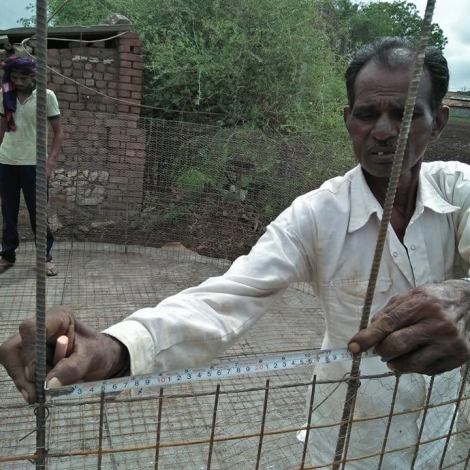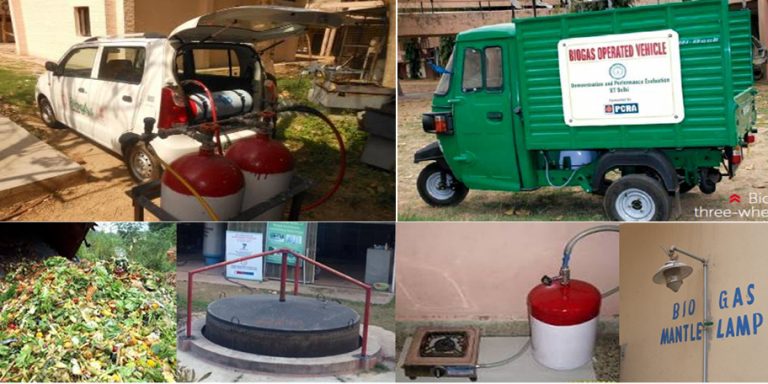I recently visited a village called Fulzar in the Jasdan District of Gujarat, India, where I saw the advantages of building water tanks out of ferrocement rather than reinforced concrete cement. An acquaintance, Ankur Khanpara, led the experiment in swapping tank materials. Ankur is pursuing a doctorate in rural development at the Rural Technology Action Group (RuTAG) at the Indian Institute of Technology, Mumbai. He had spent almost a year in Fulzar working to understand the difficulties the people faced. When he arrived, many of the villagers were struggling with malnutrition. To resolve the problem, an organization named Reliance was helping the villagers build kitchen gardens. The gardens allowed the villagers to grow fresh organic vegetables, which provided nutrients and addressed the problem of malnutrition. There are other benefits, too, such as cost saving and kitchen waste disposal. Garden owners can recycle kitchen scraps and dirty water by applying them to their crops.
The village had another problem: water was scarce. In order to grow their gardens, people stored rain water in tanks for irrigation. The water tanks represented nearly the entire material cost of the gardens. While the cost of building a garden was about Rs.19,000 (USD $254), the cost of a 15,000 liter tank was Rs.18,700 (USD $250). Ankur and his team brainstormed ideas to lower the cost of the gardens and help the villagers. Upon further research, they discovered that the tanks were built with RCC.
Generally, tanks are made up of basic materials such as concrete and steel. RCC has gained popularity lately, but it has few limitations. It requires waterproofing and repairs, two expenses that are not well addressed in Fulzar or other Indian villages, yet. RCC tanks are costly to build, they develop cracks after a few months of use, and they cannot be easily repaired by their owners but instead require skilled laborers for maintenance.
For more on water infrastructure please see our report: Ten Technologies for Rural Water Supplies
There is another technology which could replace RCC called Ferrocement. Ferrocement tanks are made with a thin layer of cement mortar that is reinforced with a cage made of wire mesh and steel bars. Ankur found that building tanks with Ferrocement could have a positive impact in the village.
This new technology has eliminated the two limitations of RCC: it is waterproof and crack resistant.
Ankur and his team decided to build a ferrocement tank. They executed their first project with little difficulty. They took note of lessons learned during construction and outlined a set of best practices. The ferrocement tank cost little more than half the price of the RCC tanks at Rs.10,700 (USD $140).
Ferrocement also provides resistances against earthquakes, high winds and other natural disasters. Using ferrocement in construction requires a lot less cement and steel, making it more environmentally friendly. Those factors plus its lower cost makes ferrocement an obvious choice in tanks in rural areas.
Following are the estimates for constructing RCC and Ferrocement tanks.
RCC tank estimate
|
Ferrocement tank estimate
|
||||||||||||||||||||||||||||||||||||||||||||||||||||||||||||||||||||||||||||||||||||||||||||||||||||||||||||||||||
With the new knowledge in hand, the next step was to spread awareness of the low-cost and efficient technology among the people of the village. Ankur hoped that they would adopt ferrocement tanks and start constructing them by themselves. To execute his plan, Ankur and team trained two villagers to build the tanks. The trainees built six tanks under the team’s observation. The newly trained tank builders then built three more tanks on their own, gaining experience and confidence.
The training and the new tanks served as examples of the benefits of ferrocement. People of the village started to incorporate the material into other construction, too, including check dams and washrooms.
As I saw during my visit, Ankur and team were successful in reducing the cost of building kitchen gardens, and they also created a sustainable source of income for the people who were trained to build ferrocement tanks.
About the Author
Harsh Vyas is an Engineering for Change Research Fellow, 2018 cohort, and a product design engineer at ITT Corporation India Pvt. Ltd.

